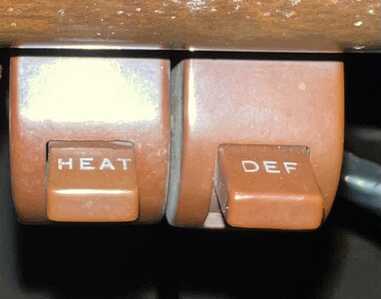@buckaroo01-2-2-2-2 John, I would think that using an ohm meter across the terminals would tell the story. Look for little or no resistance on high speed and increasing resistance as you switch to lower speeds.
Mike
Many Miles of Happy Motoring
3469 Posts on Old VCCA Chat
Are your switches riveted together or screwed together? If it's screwed together, maybe take it apart and clean the contact points?
Unfortunately the heater switch is riveted together. I don’t see an easy way to take it apart.
I just dealt with this. On my switch that is not designed to come apart, I "flooded" it with "DeoxIT, D5" spray. Then I kept it around the house to toggle it back and forth a bunch of times. This fixed it! My other switch is screwed together, so I took it apart and mostly cleaned it. The mechanism is extremely simple. If your switch feels right when toggling it, corrosion is probably the problem. Just wearing through the corrosion when it's not hooked up works. I've used the DeoxIt D5 on several other electrical components of my project. I like it.
I "bench-tested" my 2 switches by simply temporarily hooking them up to their respective fan motors. I will say, I'm not sure the intended current flow of the different speeds is working properly. In particular, the slower speeds seem to be extra slow. Maybe over time and use, that will get better.



